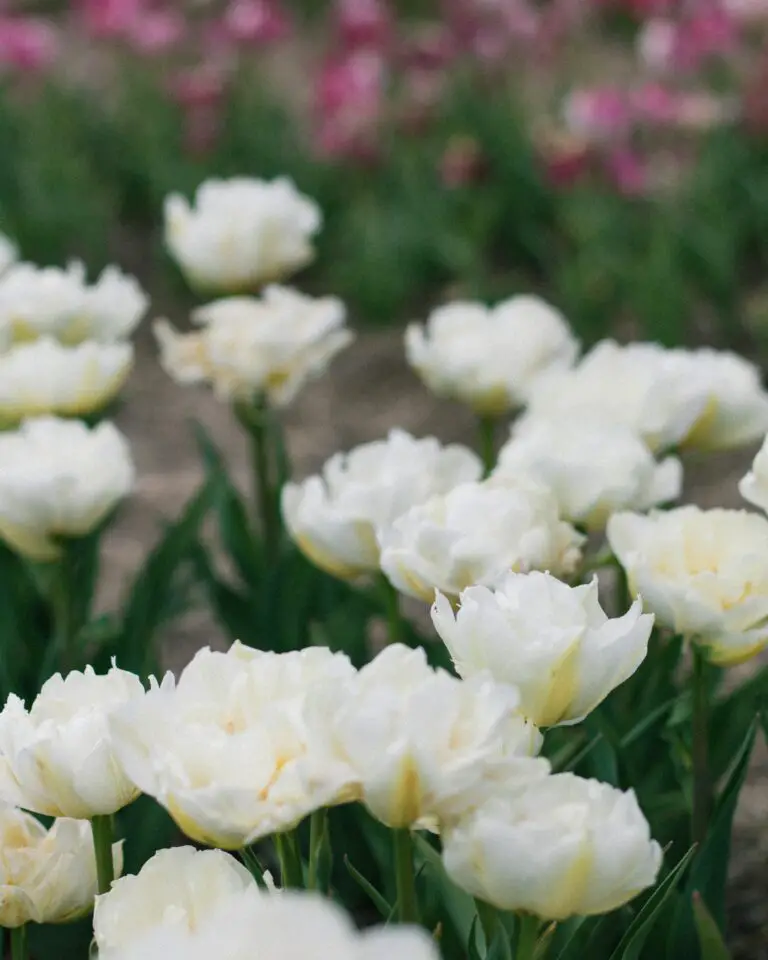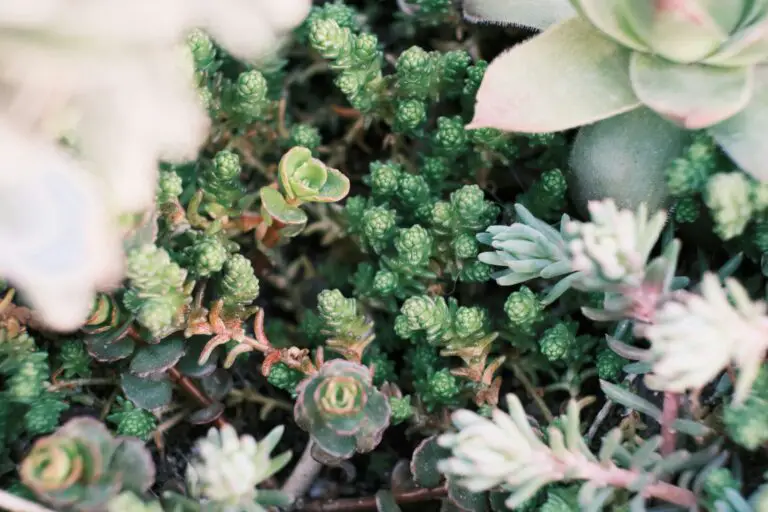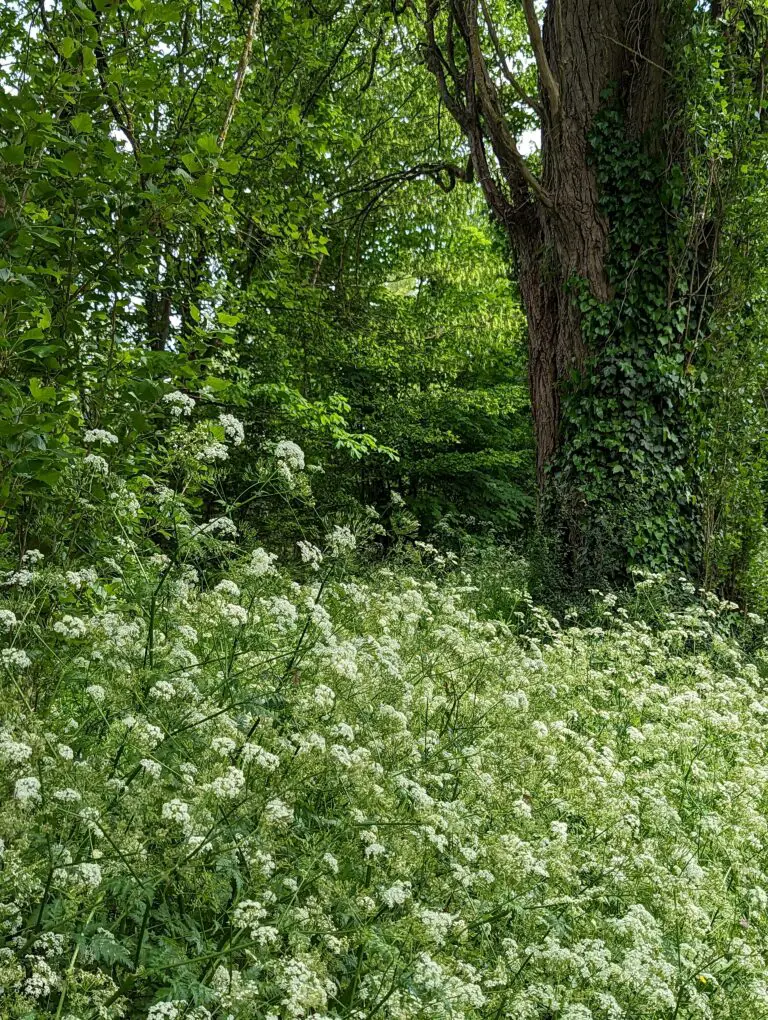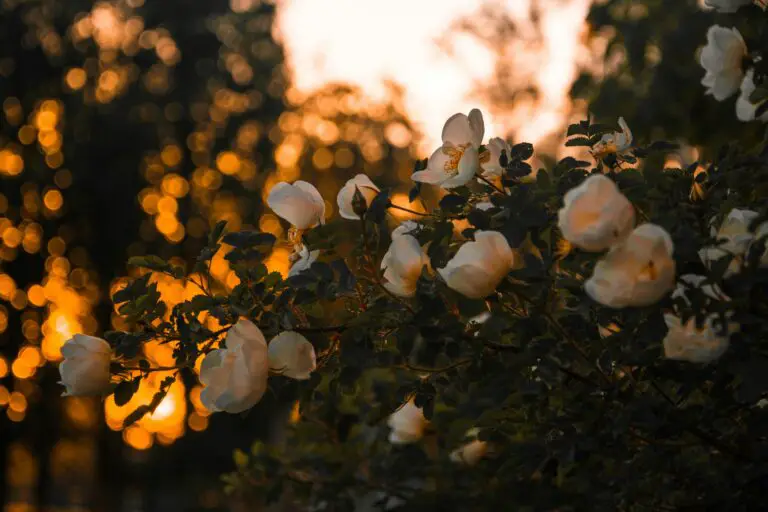Introduction to Sedum
Picture a warm summer’s eve, where sun-kissed petals unfold in a spectacular display of color and life—welcome to the world of sedum, a cherished darling in the realm of green thumbs. This succulent seduces with its easy-going nature and the way it teases with blooms, often when many flora have taken their curtain call. Sedum doesn’t follow a strict schedule. Instead, it playfully flirts with sunshine and warmth before exploding into a fiesta of flowers, typically from the midsummer’s haze deep into the crisper air of autumn.
Now, what’s all the fuss about? You see, sedum isn’t just any plant; it’s a versatile trooper in the gardening lineup. Sedum carries itself with a certain je ne sais quoi, thriving where others may wilt—with drought-tolerant superpowers and a knack for surviving the most forgetful of waterers. From alpine stonecrops brushing against the rock faces to the robust ‘Autumn Joy’ dancing in your backyard, sedum is a study in diversity.
When it comes to putting on a show, sedums don’t disappoint. The timing of their bloom often aligns with the bees humming and the butterflies fluttering, as if on cue for a grand garden ballet. The resilience of this plant, coupled with its bewitching appeal, is a love letter to those who adore long-lasting splendor with minimal fuss. For detailed insights into nurturing these succulent celebrities, this comprehensive sedum care guide is a fantastic resource.
But let’s bring this beauty to life, shall we? Cast your eyes on this visual treat that captures sedum in its blooming glory—the poetry of nature in motion, right in your living room.
Intrigued? Thought so. The tapestry of sedum’s bloom has just begun to unfurl. As we explore the nuances of these botanical gems, remember that sedums are more than just pretty faces; they’re the strong, silent types that deliver year after year. They remind us that, sometimes, the most beautiful things in life flourish with a whisper instead of a shout.
The Life Cycle of Sedum Plants
As we explore the diverse and captivating world of sedum plants, it’s like embarking on a horticultural safari. Picture this: we see them first as tiny, unassuming sprouts peeking through the soil, harboring the potential to transform garden spaces. But don’t be fooled; this is just the beginning of their enchanting journey.
Their growth trajectory from sprouts to mature flora is nothing short of remarkable. Imagine resilient green shoots toughening up, embracing the sun’s rays, and etching their spot in the ecosystem. With seasons as their compass, they navigate through stages, each bringing a unique aesthetic to your foliage ensemble. It’s not unlike watching an artist splash their canvas with broad strokes of green, culminating in a crescendo of vivid blooms.
Curious about how sedum plants flourish from youthful greens to blossoming wonders? What might seem like a performance is just their natural bloom cycle unfurling. They patiently bide time, amassing energy, and then as if on cue with the temperate days of late summer and autumn, they flaunt their starburst-like flowers.
And when they do bloom, what a spectacle it is! The sedum’s floral offering can be a riot of colors—from soft pinks to deep crimsons—dancing in the late year’s mild winds. Each flower head, a culmination of tiny, star-shaped blossoms, clusters together tightly, as though they’re composing a symphony in myriad hues.
To witness sedum’s grandeur, you needn’t venture further than a well-loved garden area. And if you’re keen on harnessing this seasonal charm in your green sanctuary, consider these expert planting tips to ensure a lively accent that thrives.

Allow me to draw your attention to the subtleties of their blossoms: the symmetrical patterns, the gradients, and the textures. It’s these details that elevate sedum’s allure, making every bloom unique and every season a fresh reveal. In essence, the life cycle of sedum is not just a growth sequence; it’s an unfolding story, punctuating the year with botanical punctuation marks—the exclamation points of your garden narrative.
Varieties of Sedum and Their Bloom Times
Like a tapestry rich with color, the genus Sedum weaves a tantalizing garden story that unfolds from the first breath of spring, to the last whisper of autumn. Each thread in this tapestry is a unique sedum variety, each with its own blooming schedule that adorns gardens throughout the year. Let’s explore the enchanting world of these hardy succulents and discover when they gift us with their floral splendor.

The early risers of the sedum family, such as Sedum acre, awake as the crisp air of early spring still lingers, dotting landscapes with their sunny disposition of bright yellow flowers. It’s as if they’re the heralds of warmer days, with each petal stretching out to catch the first of the season’s light.
As the season progresses and the sun climbs higher, a parade of stonecrop varieties joins the celebration. Take Sedum kamtschaticum, for example, with its vibrant star-shaped flowers blooming beneath the sun’s gaze in the late spring, it creates a stunning visual feast against the backdrop of lush spring greenery.
Summer arrives, and with it, the peak performance of many sedum varieties. Sedum spectabile, perhaps one of the most well-loved, unfurls its clustered pink blooms in a show reminiscent of fireworks against the July sky. And let’s not overlook the ‘Autumn Joy’ variety, which waits patiently until late summer to reveal its richly hued flowers, a canvas of dusky pinks that deepen with the advance of fall.
And as the year wanes, when most flowers have sung their swan songs, varieties like Sedum ‘Matrona’ come into their own. Their robust flowers spill over garden edges in an array of warm tones, continuing to thrive as the crispness of late fall sets in. These late bloomers stand resilient against the shortening days, a testament to the enduring beauty of the sedum family.
Sedums, with their kaleidoscope of blooming times, offer a continuous symphony of color. From the effervescent blooms of early spring sedums to the rich, warm hues of the autumn bloomers, they remind us of nature’s endless cycle and the perpetual beauty contained within. As gardeners and nature enthusiasts alike, we watch with anticipation as each variety unveils its beauty in due course, culminating in a year-round spectacle that can only be described as the sedum’s blooming ballet.
Optimizing Your Sedum’s Blooming Potential
Are you ready to nurture your sedum into showcasing a glorious display of blooms? Well, you’re in for a treat! Achieving that vibrant spread of color isn’t just about crossing your fingers and hoping your green thumb kicks in. It’s a careful dance with nature, tuning in to what your sedum seeks. Let’s unveil the secrets to helping these succulent beauties thrive.

First off, soil conditions are the foundation of all plant growth—think of it as the sedum’s dining experience. These plucky plants are akin to those diners who thrive on a ‘less is more’ approach. They’re quite content with soil that’s more on the lean side—non-fertile and well-draining. This encourages stronger roots, reducing the risk of water-logging and root rot—the bane of any sedum’s existence.
When it comes to sunlight, sedum is your solar-powered buddy. These sun-worshippers need a full day’s worth of golden rays to reach their maximum blooming potential. A spot where they can bask in at least six hours of unfiltered sunlight is ideal. Sunlight not only ensures a bounty of blooms but strengthens the stems to hold up those gorgeous flower heads that become the talk of the neighborhood.
Consider watering a balancing act; too much, and your sedum’s roots drown, too little, and blooms may be scarce. The key is to water deeply but infrequently, allowing the soil to dry out between watering. This mimicry of their natural arid habitats encourages root systems to reach deep, making them more resilient and ready to support a profuse bloom.
While you ponder on these care factors, it might also be worthwhile to brush up on your pruning skills. Check out some insightful tips and tricks for pruning sedum to promote even more blossoming.
Remember, every bit of care you invest in your sedums—be it the touch of the soil or the swivel of the pot to catch the sun’s rays—contributes to an eruption of buds. Soon enough, you’ll have a display that’s not just a feast for the eyes, but a testament to the touch of an attentive gardener. Ready, set, bloom!
Designing with Sedum: Aesthetic and Practical Considerations
Imagine painting with nature’s palette where each stroke adds not just color but also texture, sustainability, and year-long interest. This is the art of gardening with sedum—a versatile player in the eco-friendly landscaping arena. Knowing when these succulent beauties bloom ushers in a transformative approach to garden design. Sedum’s bloom time, ranging from late spring through autumn, with some varieties evergreen, offers a dynamic canvas for gardeners and landscape architects alike.
Sedums, with their forgiving nature and hardy disposition, are the unsung heroes that cater to both aesthetically driven designs and practical environmental considerations. As they blanket the ground in swathes of color, sedum’s diverse growth habits answer to the call for low-maintenance greenery that can thrive against adversity — from droughts to poor soil conditions. And as we usher in blooms that hum with the vibrant life of busy pollinators, we find resonance with nature’s rhythms in our backyards and urban spaces.
Zoning in on sedum’s varied bloom periods means we can extend our garden’s peak interest well beyond the short-lived spectacle of conventional annuals. For instance, spring-blooming sedums segue into the summer’s crescendo of taller varieties like ‘Autumn Joy’, whose rosy-pink flowers mature into russet tones come fall. It’s a continuous performance that doesn’t just end at the onset of winter chill but rather transforms; with flower heads that stand tall, offering texture amidst the sleeping garden.
An aspect easily overlooked is how these flowering times complement our lifestyle and usage of outdoor spaces. Picture a patio surrounded by the year-round lush foliage of sedums, punctuated by bursts of blooms that seem to coincide with those lazy, lemonade-sipping afternoons or the fiery glow of a late-summer barbecue. The bloom times of sedum do not only prescribe a rhythm to our gardens but also to our engagement with them.
In an era of environmental consciousness, sedum stands out for more than its seasonal charm. Green roofs and living walls embrace this succulent for its ability to insulate, conserve water, and contribute to urban biodiversity. Blossoms that come alive with pollinators demonstrate just one fragment of sedum’s utility in fostering sustainable ecosystems in our concrete jungles.
So, as we cast our eyes upon the rich tapestry that is our garden space, let us consider sedum’s symphony of blooms as not only a brushstroke of beauty but a calculated choice in painting our green future. It’s not just about when sedum opts to burst forth in color; it’s about harmonizing our outdoor sanctuaries with the shifting moods of the seasons, while tending to the greater good of our planet.
Pre-Bloom Indicators to Watch for in Sedum
If you’ve ever found yourself anticipating the vibrant hues of your sedum plants, you’re not alone. Sedum enthusiasts are often like garden detectives, seeking out the subtle signs that indicate a burst of blooming beauty is on the horizon. But what exactly should you keep your eyes peeled for when it comes to these succulent stunners? Let’s delve into the pre-bloom indicators that signal sedum’s time to shine.
Understanding the Sedum’s Lifecycle
Sedums, with their plump leaves and sturdy stems, follow a particular rhythm set by nature. In the early days of spring, they emerge from their winter slumber, with fresh growth peaking out of the soil. Keep an eye out for new, green shoots—they’re the first hint that your sedum is gearing up for its seasonal performance.
Leaf Changes: A Clue in the Foliage
The leaves of your sedum plant can divulge a lot, almost like a story unfolding right before your eyes. As bloom time approaches, you might notice the leaves at the base becoming lusher and more vivid, a contrast to the more subdued winter palette. This color shift is a sedum’s way of telling you that the show is about to begin.
Stem Progression: Sturdy and Stout
As sedum preps for blooming, it’s not just the leaves that transform. The stems, once just functional stalks, begin to stand taller and prouder, often taking on a more robust appearance. They start to support clusters of tiny, star-shaped buds, preparing for that moment when they burst open in an array of colors typically ranging from soft pinks to bold reds and sunny yellows.
Imagine this – you come home from work, and there, in the garden, amidst the typical greenery, you notice your ‘Autumn Joy’ variety has a crown of tightly packed buds, hinting that its peak pink spectacle is just around the corner. This is the sedum’s signal that it’s nearly time to toast to the new blooms.
Embedded below is a helpful video that walks you through the care of a particular sedum variety, showcasing what it looks like right before the blooming stage:
From Subtle to Show-Stopping
When the days grow warmer and the sun lingers longer in the sky, it’s a call to arms for the sedum plants. It’s not an overnight affair; rather, it’s a gradual crescendo of growth and preparation that culminates in a full-blown blooming spectacle. Whether you’re admiring the whimsical sprays of ‘Dragon’s Blood’ or the orderly blooms of ‘Matrona’, each variety presents its own unique pre-bloom indicators for those patient and observant enough to notice.
As gardeners, we tune into these natural rhythms, learning the language of our plants. With sedums, each new leaf, stem, and bud is a paragraph in the story of their annual bloom. By understanding these signs, we not only deepen our connection with our gardens but also enhance our anticipation for the floral fanfare yet to come.
Post-Bloom Care for Sedum Plants
As the vivid spectacle of Sedum’s flowering season fades, the diligent gardener turns their attention to post-bloom care, ensuring these hardy perennials greet the next season with vigor. The sprawling carpets of Sedum, so recently dotted with starry blooms, now require a thoughtful touch and a keen eye for detail.
Deadheading, the act of removing spent flowers, breathes new life into your Sedum. It prevents the plants from expending unnecessary energy on seed production—energy better directed to root and foliage development. Embrace this simple task; for it weaves the promise of future splendors into your garden’s tapestry. Gently pinch off the flower heads or use secateurs for a clean cut just above the leaf junction. The real-life charm here? Your Sedum’s resilience amplifies as you curtail its inclination to wander into dormancy.

Awareness of the soil’s caress is paramount as you prepare for the next growing season. Provide your Sedum with well-draining ground, for waterlogged roots are the bane of their existence. If the soil is heavy, amend it with sand or gravel to ensure the moisture has a swift escape route. Turn to mulch as your ally; an organic blanket conserves moisture and bestows warmth for the tender roots against winter’s chill. Cold-hardy Sedum relishes this foresight.
As days shorten and the sun wanes, your Sedum might plead for a final feast. A light application of balanced, slow-release fertilizer fortifies it against the impending cold. Consider it a loving gesture, an investment into a future burst of colors when spring returns to your doorstep.
Cherish the cycle, the perennial ebb and flow, of your Sedum. Peek beneath the foliage, and you might find fledgling buds patient for spring’s touch. These small beacons are your guarantee: your Sedum will once more rise to paint a masterpiece within your garden—when the blooming season circles back, as ceaseless as time itself.
Frequently Encountered Problems and Solutions During Blooming
Seeing a sedum plant fail to show its vibrant colors when bloom time rolls around can be disheartening. Luckily, most issues can be nipped in the bud with a little know-how. Let’s roll up our sleeves and tackle these head-scratchers one by one!
Struggling Stardom: An Adequate Light Conundrum
Imagine you’ve pampered your sedum all year, only for a lackluster performance come bloom season. It may be crying out for more light! These sun-loving succulents need their rays, just like an actor needs the spotlight. If your flora is not strutting its stuff, consider relocating it to a brighter corner of your garden or patio. Remember, they want a front-row seat to the sun’s daily show!
Water Woes: Too Much of a Good Thing
Succulents are like the camels of the plant world—they store water in their leaves and don’t need a drink too often. Overwatering can lead to root rot, and before you know it, your sedum’s bloom potential is drowning in soggy soil. Watering should be done with a ‘less is more’ mindset, just enough to quench its thirst but not drench its spirits.
Fertilizer Faux Pas: The Overindulgent Gardener
It’s tempting to shower your sedum with nutrients to spur blooming, but too much fertilizer is like an overzealous fan—it smothers. Stick to a light feeding in spring with a balanced, low-nitrogen fertilizer. Your sedum doesn’t need a buffet; a nutritious snack is all that’s needed to flower fantastically.
Pruning Pitfalls: Timing is Everything
A common gardening gaffe is mistiming a sedum’s haircut. Prune too late, and you may be snipping off fledgling flowers. The secret to success is the ‘soft touch approach’—trimming only when necessary and at the right time, in early spring. Precise pruning encourages robust blossoming, sculpting your sedum into nature’s masterpiece.
For an insightful visual guide, check out this helpful video:
It’s not all doom and gloom if your sedum seems stuck in a blooming blunder. With these tips, you can diagnose the setback and guide your green amigo back on the botanical catwalk. So don note your garden gloves and let’s turn those blooming frowns upside down!
Frequently Asked Questions
Welcome to the blooming world of sedum, where the vibrant colors and shapes of these resilient succulents take center stage. If you’ve been nurturing a sedum and are curious about its showy flowers, you’ve come to the right place. Let’s dive into the most common curiosities gardeners have about sedum and its blooming wonders!
Q1. How long do sedum blooms last?
The longevity of a sedum’s bloom can be quite impressive, often gracing gardens with their presence for several weeks. Picture this: a robust clump of ‘Autumn Joy’ sedum holding its radiant pink flowers through the crisp fall air, refusing to fade even as the first frosts arrive. Such endurance isn’t unique to ‘Autumn Joy’; many sedum varieties exhibit this admirable trait, providing long-lasting color to your garden.
Q2. What color flowers can I expect from my sedum?
When it comes to hue variety, sedum is a true artist’s palette. You might find your sedum blossoming into a spectrum ranging from delicate whites and soft pinks to bold reds and purples. Imagine walking through a garden where ‘Brilliant’ sedum dots the landscape with its vivid pink blooms, or ‘Purple Emperor’ sedum showcases its regal, dusky flowers. The diversity is as splendid as it is surprising!
Q3. Can sedum bloom more than once in a year?
Now, here’s something to spark curiosity: While most sedum varieties are known for their single grandiose blooming season, there are a few, such as ‘Matrona’ sedum, that may grace us with a second, albeit less conspicuous flowering if the spent blooms are trimmed back in time. It’s not the norm, but it’s a delightful bonus when it happens!
Q4. How do I encourage more blooms on my sedum?
Ever wanted to be a bloom-boosting magician? Well, now you can! Ensuring your sedum receives ample sunlight, providing well-draining soil, and practicing judicious watering will serve as your magic wand. Occasional feeding with a low-nitrogen fertilizer can also encourage your sedum to produce more flowers. Abracadabra, let there be blooms!
Q5. What should I do if my sedum isn’t blooming?
Sometimes, even with the best care, a sedum may shy away from blooming. Before you worry, consider the plant’s age—sometimes they need a season or two to settle in. Also, assess its growing conditions. Is it getting enough light, or perhaps too much nitrogen? Addressing these concerns can lead to a future where your sedum joyfully blooms like its counterparts in the wild, refusing to let another season pass without a show.



